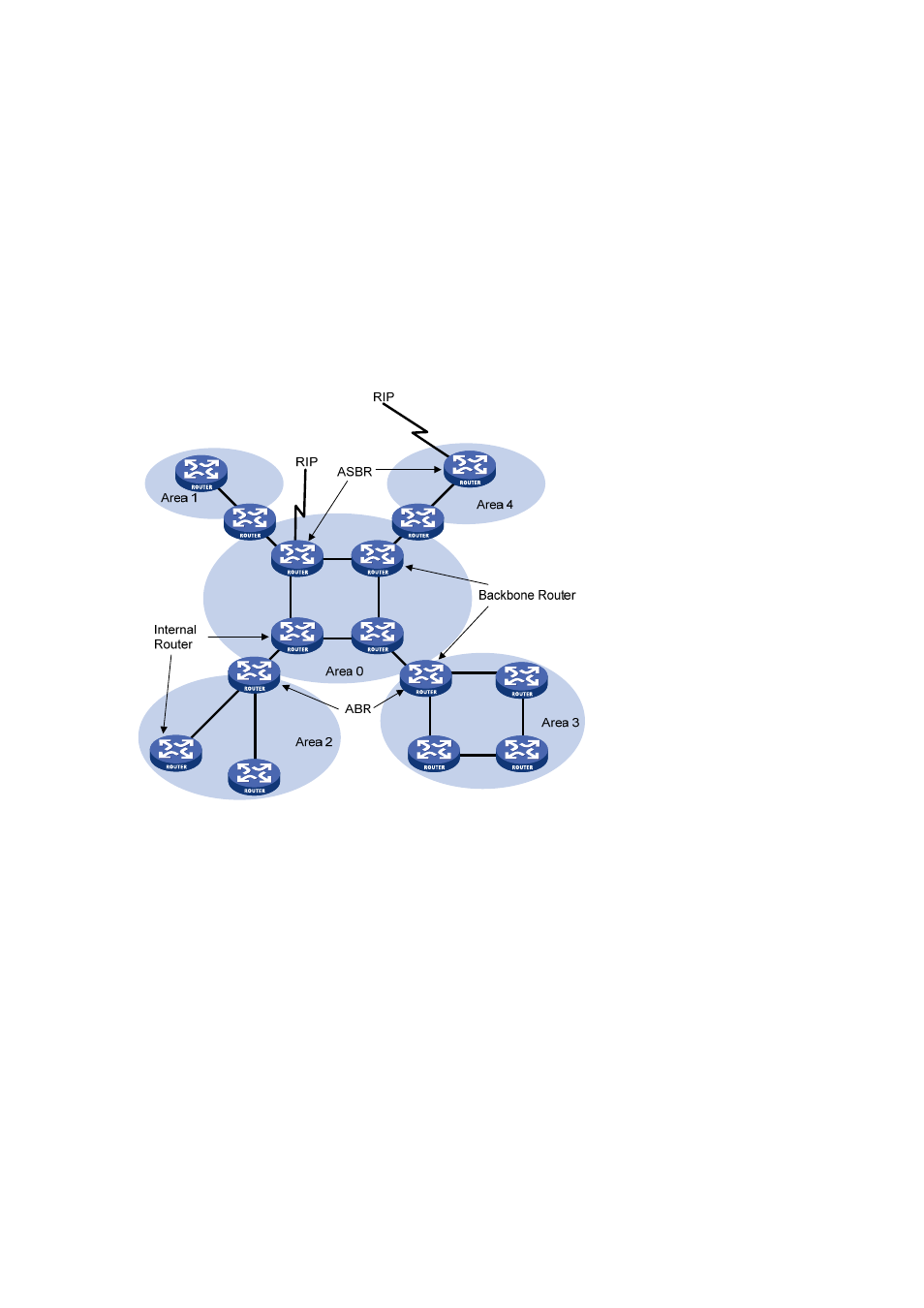Backbone area and virtual link – H3C Technologies H3C S3600 Series Switches User Manual
Page 332

4-5
2) Area border router (ABR)
An area border router belongs to more than two areas, one of which must be the backbone area. It
connects the backbone area to a non-backbone area. The connection between an area border router
and the backbone area can be physical or logical.
3) Backbone
router
At least one interface of a backbone router must be attached to the backbone area. Therefore, all ABRs
and internal routers in area 0 are backbone routers.
4) Autonomous system border router (ASBR)
The router exchanging routing information with another AS is an ASBR, which may not reside on the
boundary of the AS. It can be an internal router or area border router.
Figure 4-2 OSPF router types
5) Type-7 LSAs translator
A Type-7 LSAs translator takes effect on an ABR. The state of the Type-7 LSAs translator determines
whether the ABR needs to translate Type-7 LSAs into Type-5 LSAs.
z
When the Type-7 LSAs translator state is Enabled or Elected, the ABR translates Type-7 LSAs
into Type-5 LSAs.
z
When the Type-7 LSAs translator state is Disabled, the ABR does not translate Type-7 LSAs into
Type-5 LSAs.
Backbone area and virtual link
1) Backbone
area
With OSPF area partition, not all areas are equal. One of the areas is different from any other area. Its
area ID is 0 and it is usually called the backbone area. Routing information between non-backbone
areas must be forwarded by the backbone area. Therefore, OSPF requires:
z
All non-backbone areas must maintain connectivity to the backbone area.
z
The backbone area itself must maintain connectivity.
